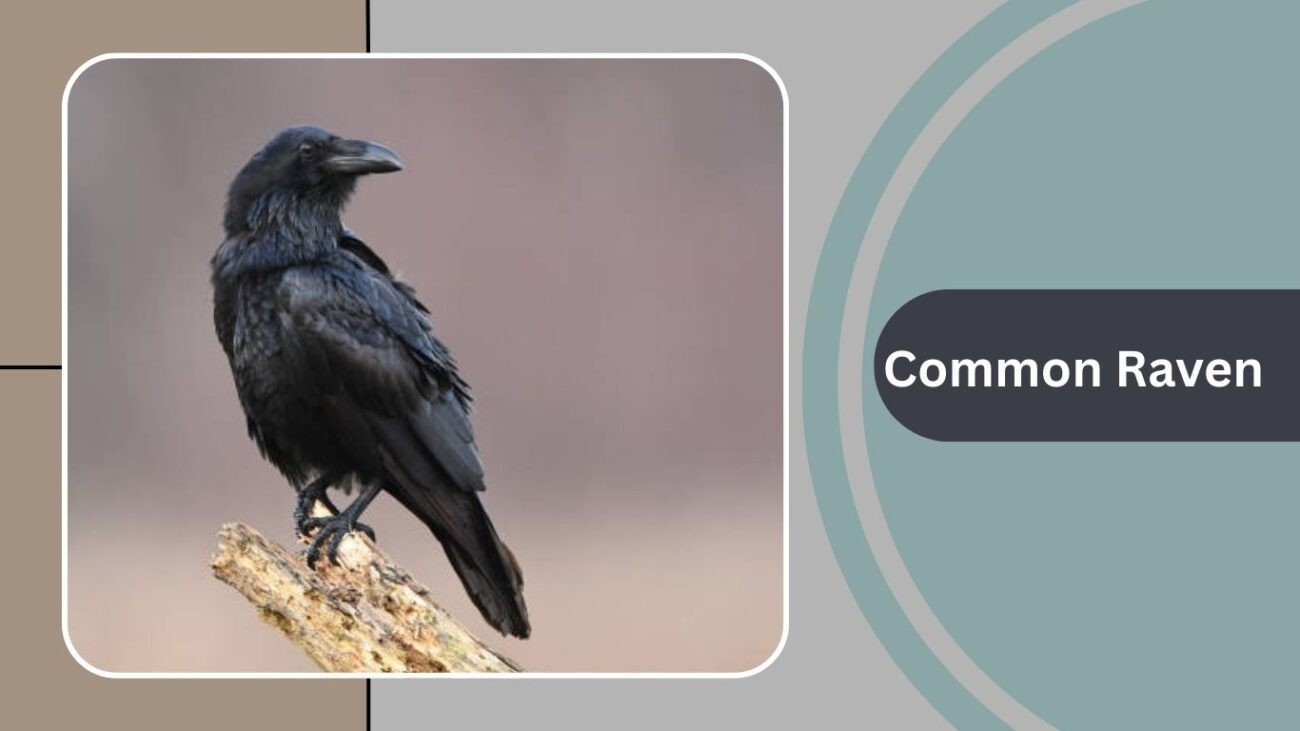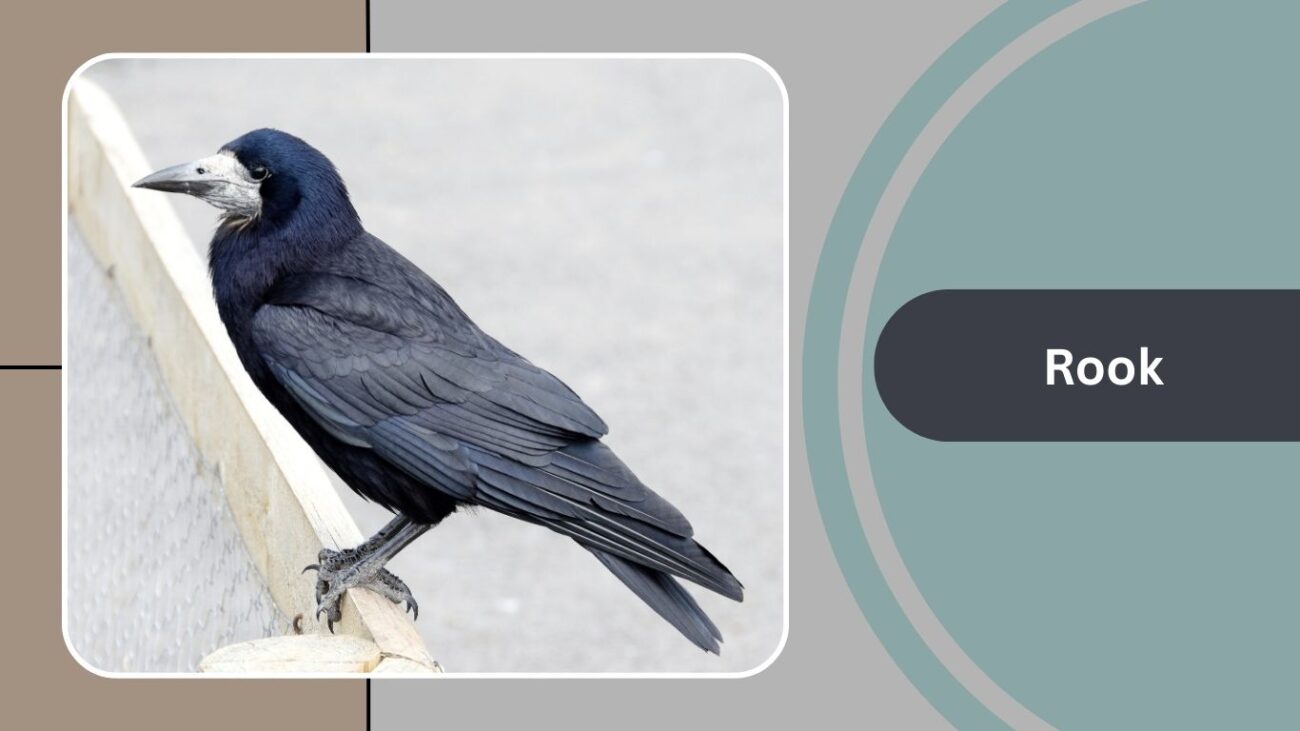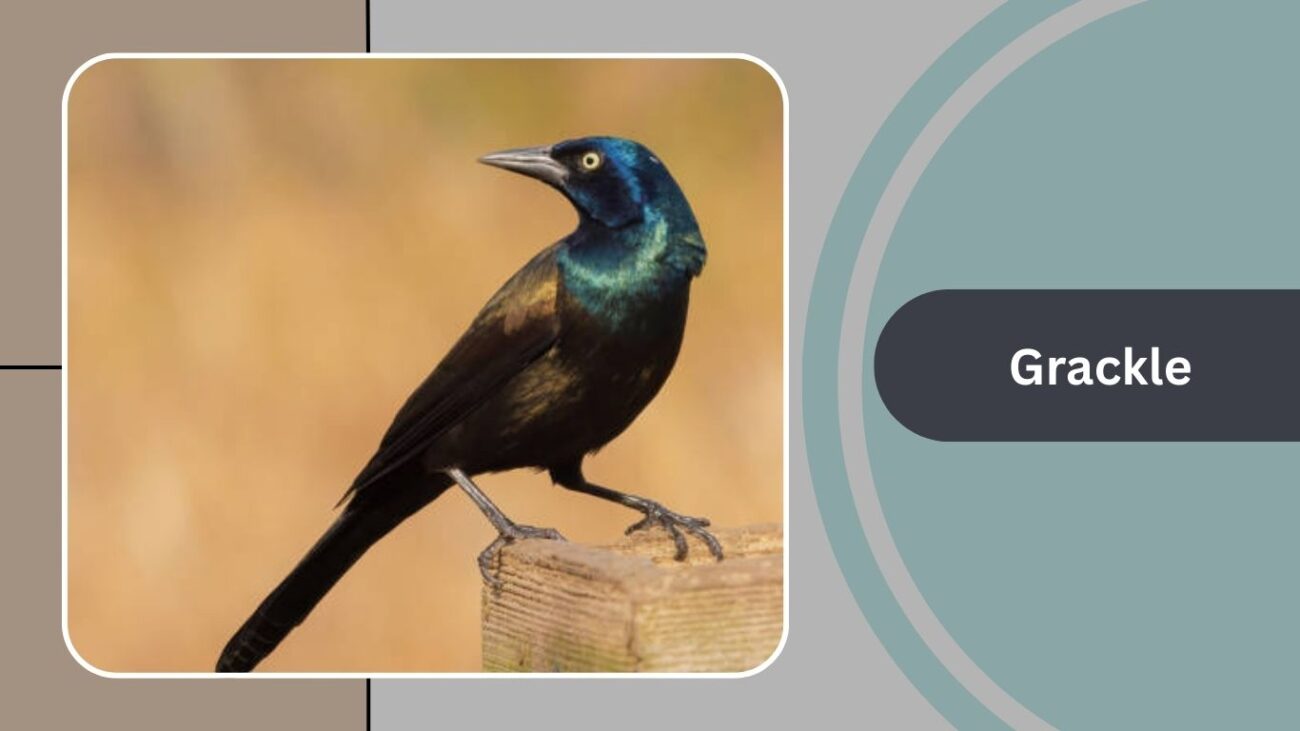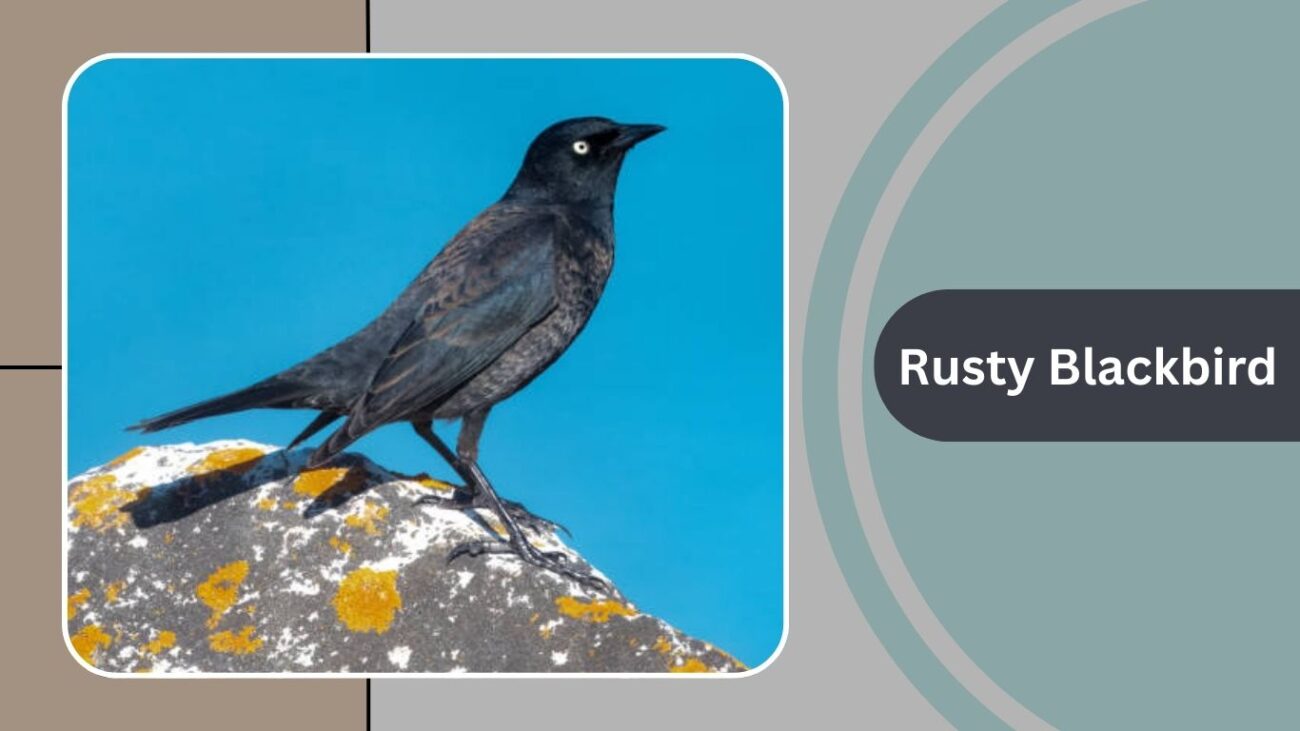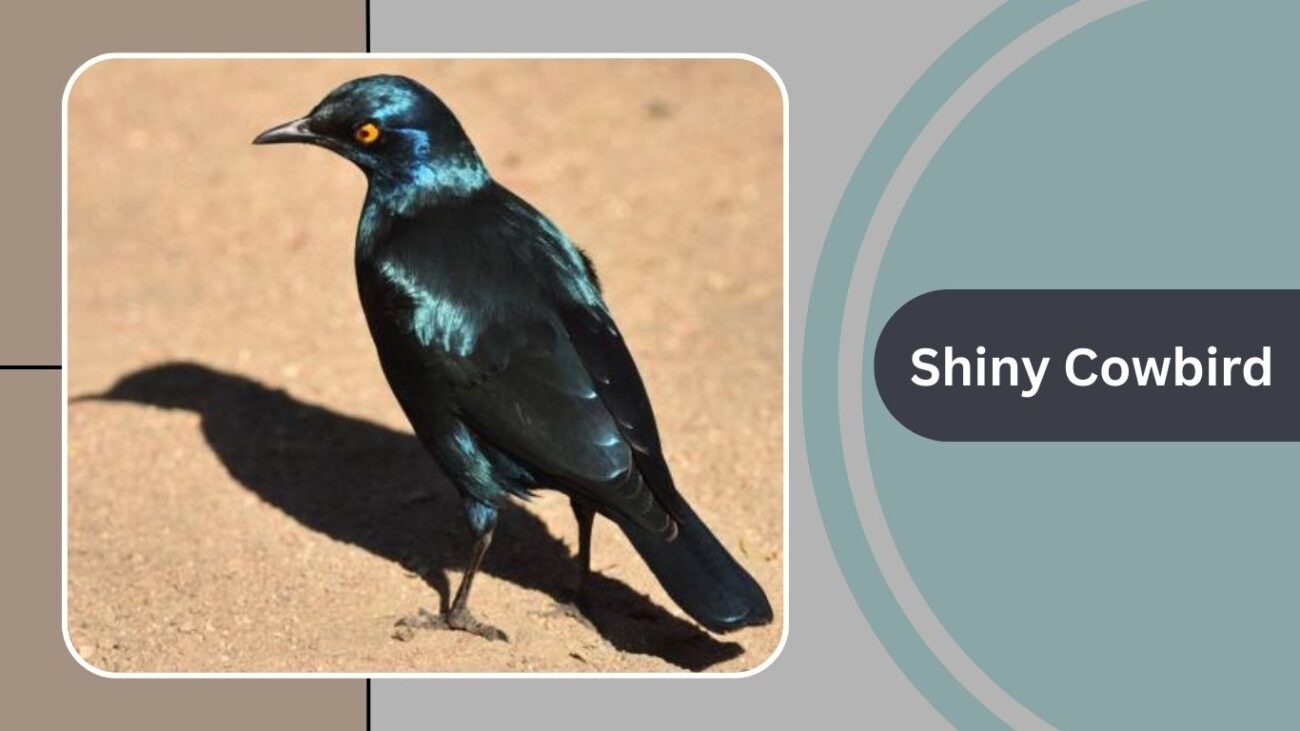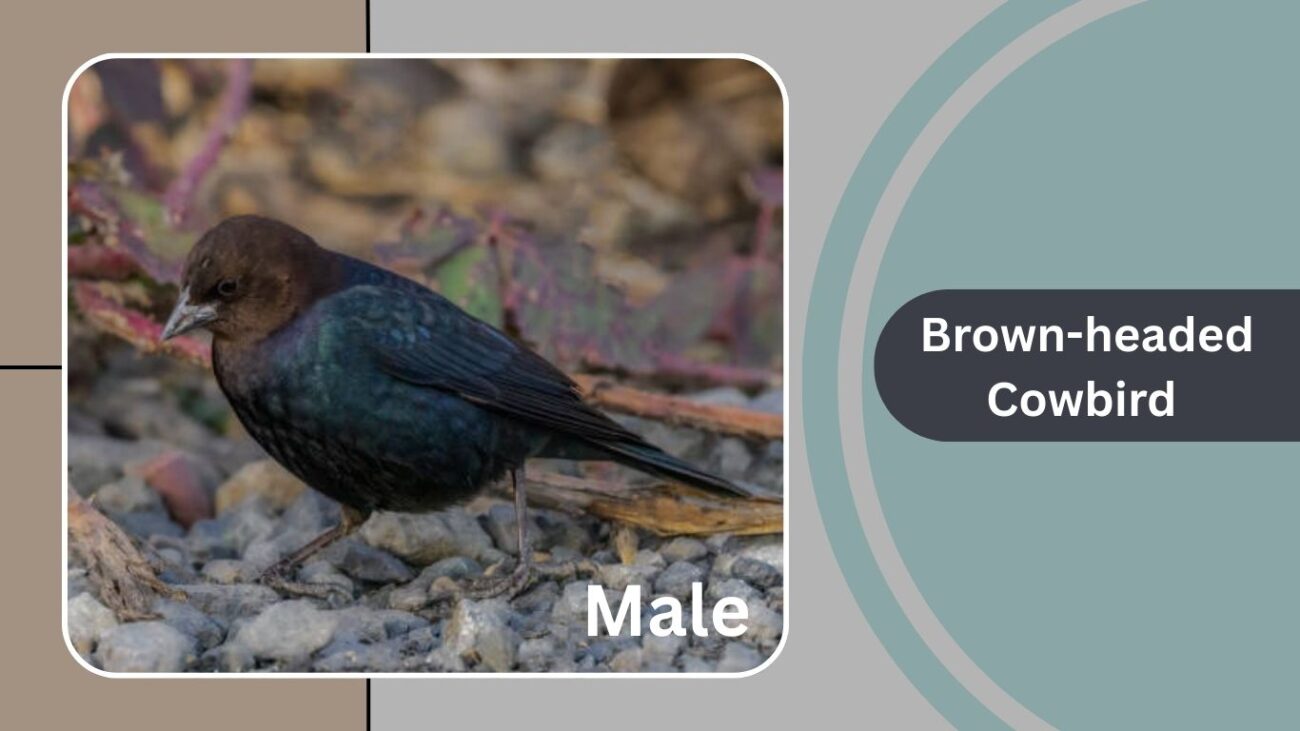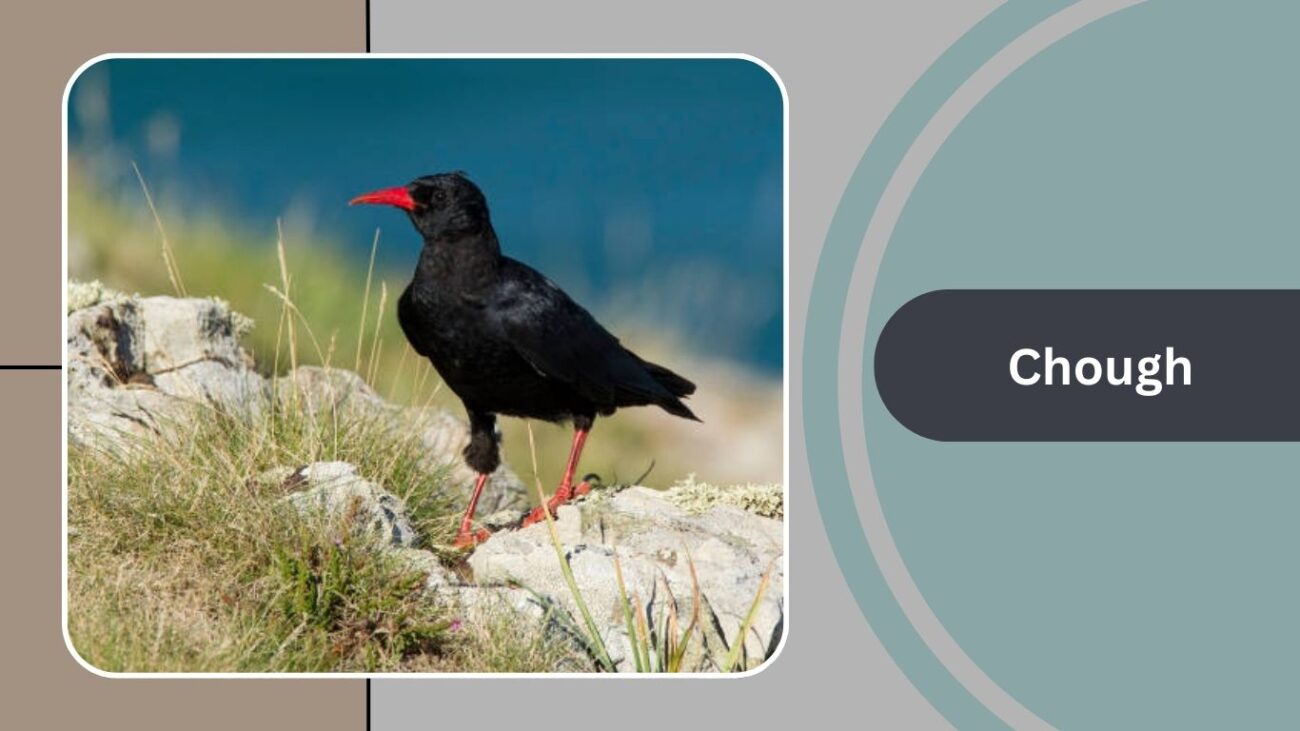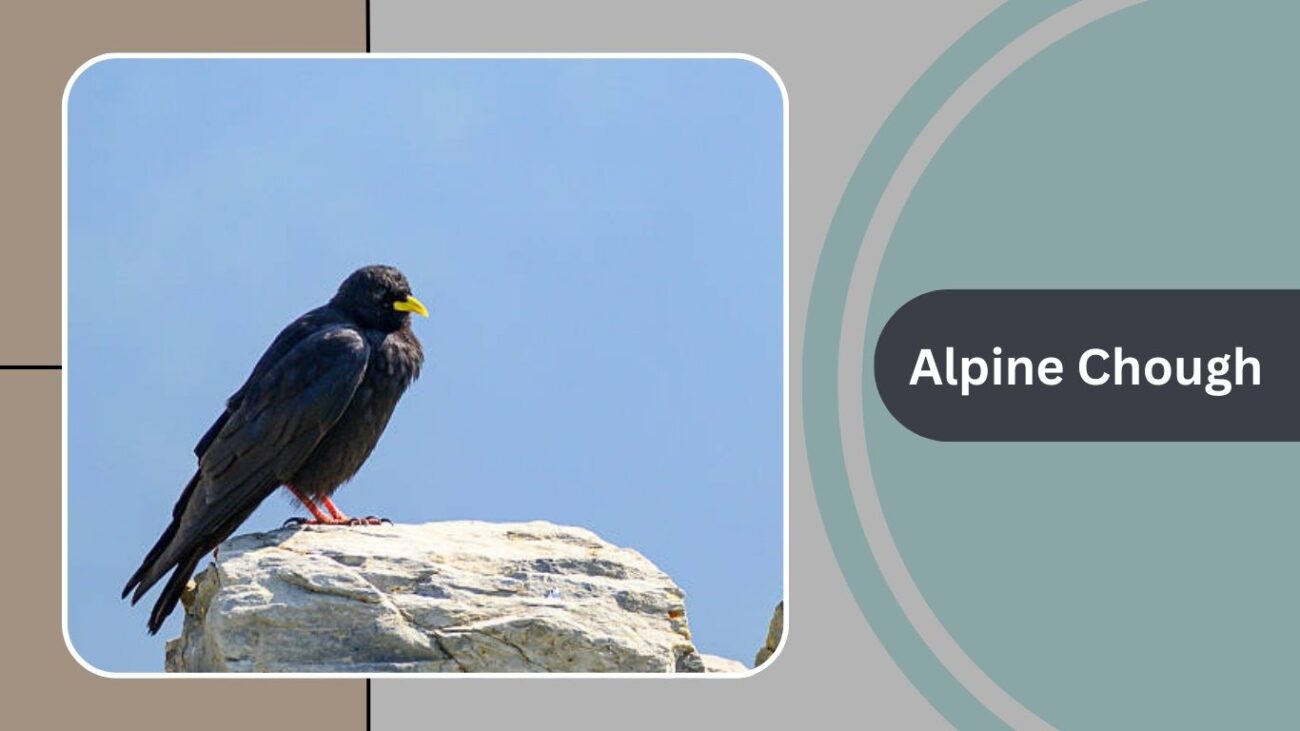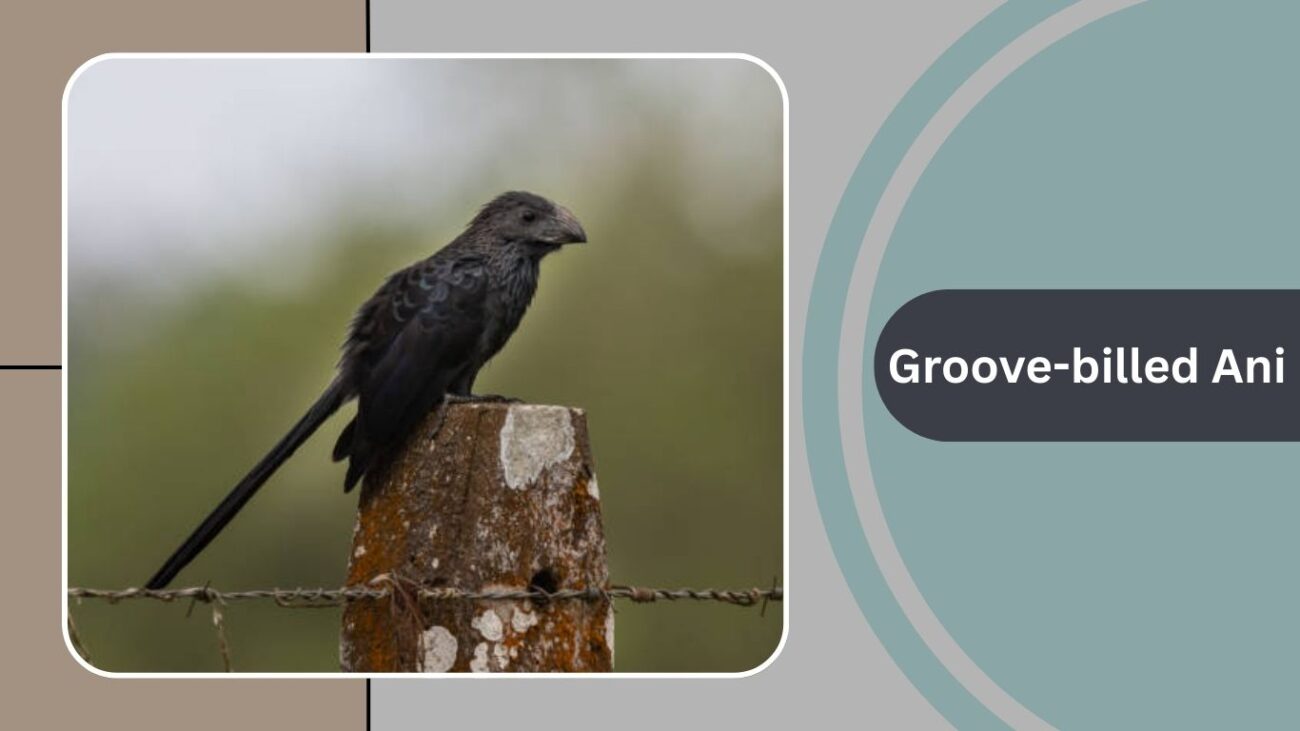Crows are among the most recognizable black birds in the world, but many other species share the same dark plumage and similar behavior, making them easy to confuse at first glance. From ravens and jackdaws to blackbirds and cowbirds, these species often look nearly identical to crows when perched or flying in flocks. Some of them share the crow’s intelligence and scavenging habits, while others only resemble crows in appearance. In this guide, we’ll explore 15 black birds that look like crows, highlighting how to tell them apart.
1. Common Raven
The Common Raven is one of the most well-known birds that look like crows, and they are often mistaken for each other. Both species share black plumage, strong bills, and similar habits, but ravens are noticeably larger and bulkier. Their thick, shaggy throat feathers and wedge-shaped tail help distinguish them from crows when observed closely.
Identification
- Larger body than a crow, wingspan up to 4 feet
- Shaggy throat feathers
- Strong, heavy bill compared to the thinner bill of a crow
- Wedge-shaped tail visible in flight
Habitat
Common Ravens live across the Northern Hemisphere in a variety of habitats, from forests and mountains to deserts and coastal cliffs. They are highly adaptable and can thrive in both wild and urban areas.
Diet
Ravens are omnivorous opportunists. They eat carrion, small mammals, insects, fruit, grains, and even human food scraps. Like crows, they are intelligent problem-solvers, often storing food for later and using tools to access hard-to-reach meals.
2. Rook
The Rook is another black bird that often looks like crows, especially when seen in flocks. At a glance, their glossy black feathers and size make them easy to confuse with crows, but closer inspection reveals key differences. Adult rooks have bare, grayish-white skin around the base of the bill, which crows do not.
Identification
- Slightly slimmer body than a crow
- Black plumage with a purplish sheen in sunlight
- Distinct bare patch of whitish skin around the base of the bill in adults
- Long, pointed bill compared to the shorter bill of crows
Habitat
Rooks are found across Europe and parts of Asia, favoring farmlands, open countryside, and towns. They are social birds, often nesting in large colonies called rookeries.
Diet
Their diet includes insects, earthworms, seeds, and small vertebrates. They are also known to forage in agricultural fields and scavenge in urban areas. Like crows, rooks are highly opportunistic and adaptable to different food sources.
3. Jackdaw
The Jackdaw is a small black bird that often looks like crows, though it is more compact and lighter in build. Its glossy black plumage and intelligent behavior closely resemble crows, but its pale, silvery eyes and grayish nape set it apart.
Identification
- Smaller than both crows and rooks, wingspan about 2 feet
- Black plumage with a grayish-silver nape and cheeks
- Striking pale blue or silvery eyes
- Shorter bill compared to crows
Habitat
Jackdaws are common across Europe, western Asia, and North Africa. They live in towns, villages, woodlands, and farmland, often nesting in chimneys, tree hollows, or even buildings.
Diet
Jackdaws eat insects, seeds, fruits, and small vertebrates. They are also known to scavenge food from human settlements, much like crows. Their adaptability makes them thrive in both rural and urban environments.
4. Grackle
The Grackle is another bird that can look like crows because of its sleek black feathers and long tail. However, under the sunlight, grackles show iridescent purple, green, or blue hues, giving them a shinier appearance than crows.
Identification
- Slightly smaller and slimmer than crows
- Long tail, often keel-shaped
- Glossy black feathers with iridescent hues in sunlight
- Bright yellow eyes (unlike the dark eyes of crows)
Habitat
Grackles are found throughout North and Central America, especially near wetlands, agricultural fields, and suburban areas. They often gather in large flocks, which makes them highly noticeable.
Diet
Grackles are omnivores that eat insects, grains, fruits, frogs, small fish, and even garbage. They are highly opportunistic, often raiding crops or scavenging scraps in cities. Their resourcefulness is similar to crows, which adds to the confusion.
5. Eurasian Blackbird
The Eurasian Blackbird (also called the Common Blackbird) is one of the most widespread species in Europe and Asia that sometimes looks like crows because of its jet-black plumage. However, it is smaller and belongs to the thrush family, which gives it a slimmer body and different posture compared to crows.
Identification
- Males have glossy black plumage with bright yellow-orange beak and eye-ring
- Females are dark brown rather than pure black
- Noticeably smaller than crows, wingspan around 14 inches
- Upright stance and slimmer body shape compared to bulky crows
Habitat
They are found across Europe, Asia, and North Africa, commonly seen in woodlands, parks, gardens, and farmlands. They are frequent visitors to backyards and urban areas, especially where food is provided.
Diet
Eurasian Blackbirds mainly eat insects, earthworms, spiders, and snails. They also feed heavily on berries, fruits, and seeds depending on the season. Unlike crows, which scavenge broadly, blackbirds forage mostly on the ground, flicking leaves aside to find hidden prey.
6. Brewer’s Blackbird
The Brewer’s Blackbird is a North American species that can easily be mistaken for a crow at first glance due to its glossy black feathers and flocking behavior. They are smaller than crows, but their appearance, especially from a distance, makes them one of the birds that look like crows.
Identification
- Males have shiny black plumage with purple and green iridescence
- Females are dark brown, less glossy
- Bright yellow eyes in males (a key difference from crows’ dark eyes)
- Smaller size, about 9 inches long, compared to crows at 17–20 inches
Habitat
They are widespread across the United States and Canada, thriving in open fields, grasslands, parks, and suburban areas. They often forage in large flocks, especially during migration or in winter.
Diet
Brewer’s Blackbirds eat insects, seeds, and grains. They are also known to scavenge in parking lots, picnic areas, and farmlands. Much like crows, they show boldness around humans, frequently searching for crumbs, discarded food, and crop residues. This opportunistic feeding behavior often enhances their crow-like resemblance.
7. Rusty Blackbird
The Rusty Blackbird is another species that sometimes looks like crows, especially in its breeding plumage when it appears almost entirely black. However, in winter, they develop a rusty-brown edging on their feathers, which gives them their name.
Identification
- Breeding males are glossy black with faint iridescence
- Winter plumage shows rusty-brown feather edges
- Pale yellow eyes stand out against the dark feathers
- Smaller than crows, averaging 9 inches in length
Habitat
Rusty Blackbirds are found in boreal forests and wetlands across North America. They prefer swampy woodlands, bogs, and marshes, often foraging near water.
Diet
They primarily feed on aquatic insects, snails, small fish, and seeds. During migration, they also consume grains and berries. Unlike crows, which are general scavengers, Rusty Blackbirds specialize in wetland foraging, turning over leaves and probing mud for hidden prey.
8. Shiny Cowbird
The Shiny Cowbird is a glossy, dark-plumaged bird that may look like crows from a distance, especially because of its black sheen and flocking habits. However, it is smaller and slimmer, with a more compact body and a straighter bill.
Identification
- Iridescent black plumage with purple-blue shine
- Males are entirely black, while females are dull brown
- Smaller than crows, measuring about 7–8 inches
- Short, conical bill compared to the long, curved bill of crows
Habitat
Shiny Cowbirds are native to South America but have spread into Central America, the Caribbean, and parts of the southern United States. They thrive in grasslands, agricultural areas, and open scrublands.
Diet
Their diet includes seeds, insects, and small fruits. They are opportunistic feeders, often foraging on the ground in flocks. Like crows, they adapt easily to human-modified environments. However, their most notable behavior is brood parasitism—they lay eggs in the nests of other birds, leaving host species to raise their young. This unique strategy sets them apart from crows despite the resemblance in appearance.
9. Brown-headed Cowbird (Male)
The Brown-headed Cowbird is another species that can look like crows, particularly the male, which has glossy black plumage on its body. From a distance, many people confuse them with small crows, though their size and distinct head coloration are noticeable up close.
Identification
- Males: black body with an iridescent sheen and a chocolate-brown head
- Females: dull gray-brown overall, not crow-like
- Much smaller than crows, only about 7–8 inches long
- Short, thick bill designed for seed-eating
Habitat
Brown-headed Cowbirds are common across North America, thriving in grasslands, farmland, forest edges, and urban parks. They are often seen in mixed flocks with other blackbirds, starlings, or grackles.
Diet
They primarily eat seeds and grains but also consume insects, especially during the breeding season. Like Shiny Cowbirds, they are brood parasites, laying eggs in other birds’ nests. This makes them very different from crows in behavior, though their glossy black body makes them appear crow-like at a glance.
10. American Black Vulture
The American Black Vulture is not a songbird but a scavenger that can sometimes look like crows when seen circling high in the sky or perched from a distance. Its dark plumage and hunched posture often cause confusion.
Identification
- Wingspan about 5 feet, larger than crows
- Black body with whitish patches near the wingtips (visible in flight)
- Bare, dark-gray wrinkled head (unlike crows’ feathered heads)
- Short tail and broad wings for soaring
Habitat
Black Vultures are found across the southeastern United States, Central America, and South America. They prefer open areas, forests, and urban regions where carrion is available.
Diet
As scavengers, they feed almost entirely on carrion, including roadkill and animal remains. They sometimes follow other vultures or even Bald Eagles to find food. While crows scavenge too, vultures are exclusively carrion-eaters, which sets them apart despite their similar dark appearance.
11. Chough
The Chough is a member of the crow family that can look like crows due to its all-black plumage and similar flight style. However, it has unique features that set it apart, most notably its red bill and legs.
Identification
- Glossy black feathers with a slightly iridescent sheen
- Long, curved red bill (a clear difference from crows)
- Bright red legs and feet
- Smaller and slimmer than crows, about 15–16 inches long
Habitat
Choughs live in Europe, North Africa, and parts of Asia, typically favoring coastal cliffs, mountains, and grasslands. They often nest in crevices and rocky outcrops, unlike crows that prefer trees or urban areas.
Diet
They mainly eat insects, spiders, and larvae, often probing soil with their curved bills. They also consume seeds and berries when insects are scarce. While their diet is narrower than crows, their opportunistic foraging behavior and crow-like flight patterns often cause confusion.
12. Alpine Chough
The Alpine Chough is closely related to the Chough and also one of the black birds that look like crows. It shares the same glossy black plumage but differs by having a yellow bill instead of red.
Identification
- Entirely black plumage with a shiny sheen
- Short, slightly curved yellow bill
- Red legs similar to the red-billed Chough
- About the same size as a crow, 15–17 inches long
Habitat
Alpine Choughs inhabit high mountain ranges of southern Europe, the Himalayas, and parts of Central Asia. They are often seen soaring in flocks around cliffs, ski resorts, and alpine villages.
Diet
Their diet includes insects, worms, seeds, and food scraps from human settlements. They are highly opportunistic and often gather near ski resorts or mountain towns to scavenge leftovers, similar to crows scavenging in cities. Their adaptability and crow-like behavior make them easy to confuse with true crows.
13. Groove-billed Ani
The Groove-billed Ani is a tropical bird that can sometimes look like crows because of its black plumage and long tail. However, it belongs to the cuckoo family and has a distinctive heavy, ridged bill that makes it stand out upon closer inspection.
Identification
- Entirely black plumage with a dull sheen
- Large, laterally compressed bill with visible grooves
- Long tail, often carried low when perched
- About 13–14 inches long, smaller than most crows
Habitat
They are found in Central and South America, extending into southern Texas. Groove-billed Anis prefer open fields, savannas, pastures, and scrublands, often seen in family groups.
Diet
Groove-billed Anis feed on insects such as grasshoppers, beetles, and caterpillars, along with small reptiles, amphibians, and fruits. Unlike crows, which are broad omnivores and scavengers, Anis focus more on insect hunting in grassy habitats.
14. Great-tailed Grackle
The Great-tailed Grackle is a striking bird that often looks like crows because of its black plumage and loud calls. However, its long tail and shimmering iridescence give it a more flamboyant appearance compared to the matte-black look of true crows.
Identification
- Glossy black feathers with strong purple and green iridescence
- Males are large with extremely long, V-shaped tails
- Females are smaller and dark brown instead of black
- Pale yellow eyes, unlike the dark eyes of crows
Habitat
Great-tailed Grackles are widespread across North and Central America. They thrive in cities, agricultural lands, wetlands, and coastal areas, often gathering in noisy flocks.
Diet
They are opportunistic feeders, eating insects, grains, fruits, frogs, fish, and even garbage. Their boldness around humans, including raiding trash cans and outdoor cafes, mirrors crow behavior. While slimmer and flashier than crows, their adaptability and scavenging habits make them strongly crow-like in both looks and lifestyle.
15. Fish Crow
The Fish Crow is one of the black birds most often confused with the American Crow, making it a prime example of a bird that looks like crows. They are nearly identical in appearance, and the main way to distinguish them is by their call, which is a nasal “cah-cah” compared to the cawing of crows.
Identification
- Glossy black plumage, same as American Crow
- Slightly smaller and slimmer than the American Crow
- Shorter, more rounded wings and a less bulky head
- Very difficult to distinguish visually without hearing its voice
Habitat
Fish Crows are found in the eastern and southeastern United States, particularly near rivers, lakes, coasts, and wetlands. They often live alongside American Crows, which adds to the confusion.
Diet
As their name suggests, Fish Crows frequently eat fish and other aquatic creatures. However, they also scavenge for carrion, steal food, raid crops, and forage in urban areas. Their omnivorous and opportunistic feeding style is nearly identical to true crows, which makes them look and behave very similarly.


